► CAR drives VW’s oddest GTX model yet
► It’s a six-seat family bus with 335bhp…
► … unsurprisingly, it has a confused personality
I’ve been grappling with the Volkswagen ID. Buzz GTX’s existence since I returned from its international launch event. The brand is marketing it as the sharp-driving flagship of the MPV’s range but, having spent a full day tearing around the outskirts of Hannover in one, I fear its branding has been mishandled.
Don’t get me wrong, the GTX probably makes good business sense. Sporty mid-sized vans are immensely popular right now. In fact, the Ford Transit Custom was the best-selling vehicle in the UK in 2022, cornering more than a third of the one-tonne van segment and outperforming every passenger car on sale.
Ford also has its own flagship electric sports van, in the shape of the E-Transit Custom MS-RT. We’ve driven it – and we were impressed by how good it was. We’ve also driven the passenger-carrying Tourneo Custom and found it was similarly excellent.
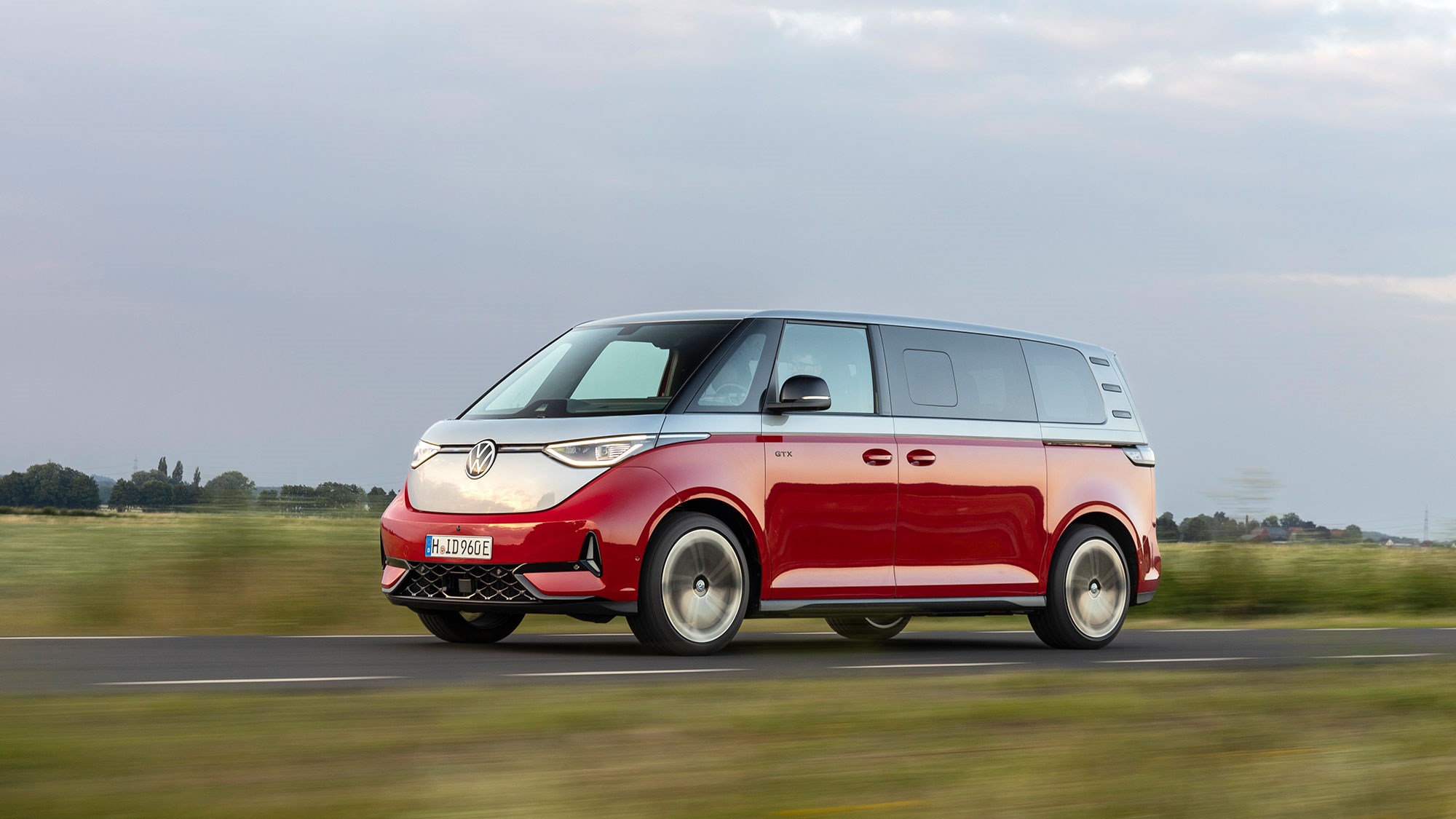
So, the ID. Buzz GTX is facing some stiff competition – and early impressions suggest Volkswagen isn’t competing in the same league. It might be faster than the E-Transit in a straight line, but it doesn’t stop, corner or ride anywhere near as well, which I think rather defeats the point. And that’s before I address the practicality limitations.
Then there’s the issue of price. Volkswagen hasn’t yet confirmed how much the ID. Buzz GTX will cost – prices are set to be released in autumn 2024 – but if the price walk matches that of the brand’s other GTX cars, I’ve got more of a reason to be concerned.
Allow me to elaborate. The difference between the cheapest Volkswagen ID.4 Match and the range-topping ID.4 GTX is around £11,500. Apply that to the ID. Buzz range and you’re staring down the barrel of a be-windowed electric van that costs more than £70,000 before options. To me, that seems like too much for what this van is. Scroll down to find out why.
At a glance
Pros: Faster than a standard Buzz, more comfortable seats, additional equipment
Cons: Doesn’t handle as well as a Transit, three-row SWB models have small boots
What’s different?
Not a huge amount – but that’s on purpose. The exterior changes are quite minor, stretching as far as some racier front and rear bumpers, a few ‘GTX’ badges and some larger 21-inch alloy wheels. You can also choose to have the van’s bodywork finished in this rather fetching Cherry Red paint.
The cabin has received a more thorough overhaul. You get new sports seats, acres of black upholstery and a slightly larger 12.9-inch infotainment system, up from the 12.0-inch screen found on the outgoing Buzz. This larger screen also has a faster processor than before, which makes the touchscreen feel a lot less clunky to use.
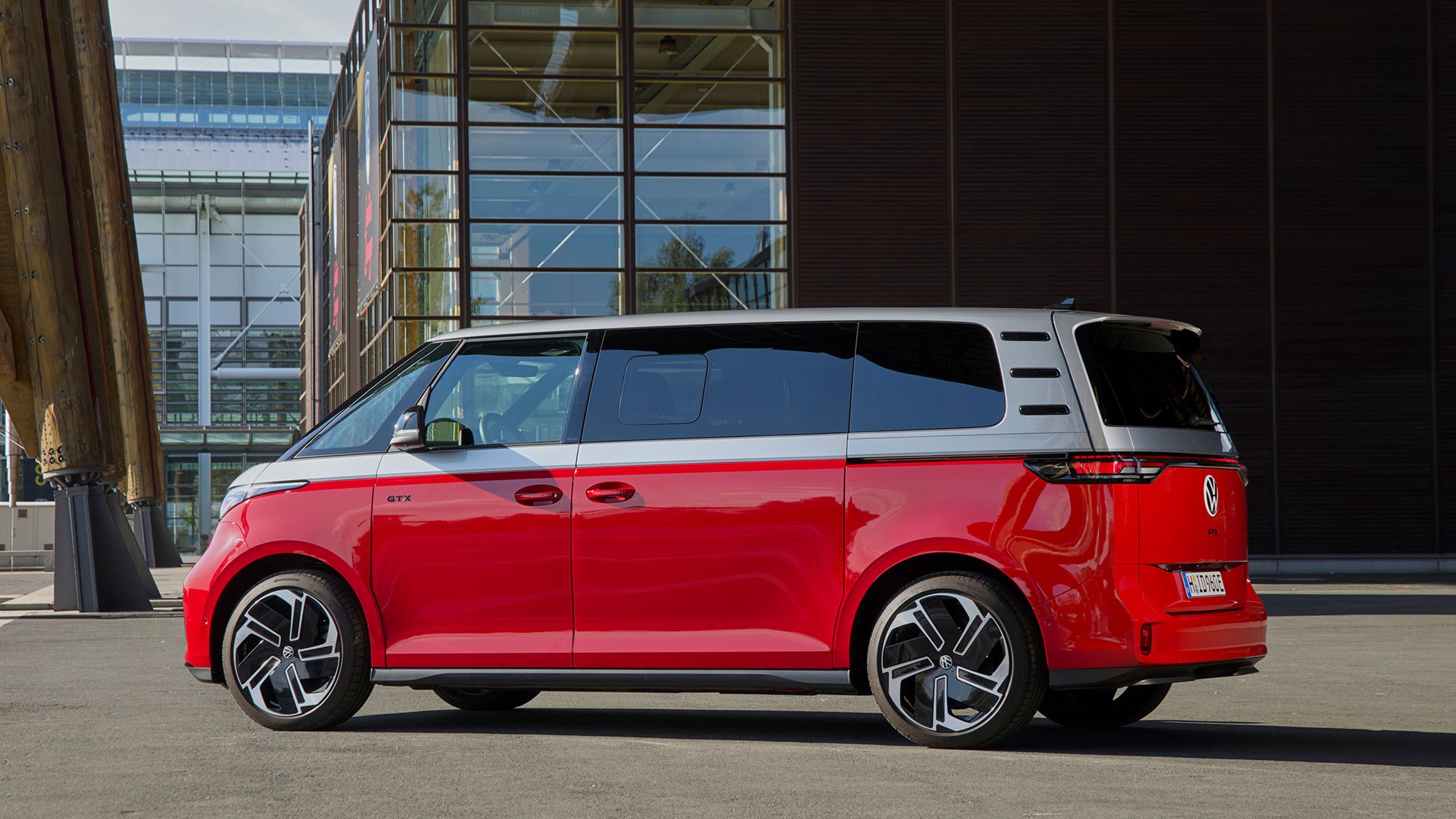
Naturally, because the GTX is the sporty model, you also get a lot more power over the most basic rear-wheel drive Buzz – 50% more to be precise. However, Volkswagen also took the opportunity to make made a few improvements to the MEB platform’s battery technology to eke a few more miles from it. As I’ll now explain.
What are the specs?
Unlike the standard Buzz, (which has just one motor at the rear), the GTX has a motor on each axle. Combined, they churn out 335bhp and 413lb ft of torque, which Volkswagen proudly states makes it the ‘most powerful’ Microbus it’s ever built.
The short-wheelbase model can sprint from 0–62mph in 6.1 seconds, while the long-wheelbase version takes 6.4 seconds thanks to its slightly higher kerb weight. More importantly, the extra power increases the Buzz’s maximum towing capacity from 1000kg to 1800kg, which makes it better suited to towing (although that figure is half of what the best diesel-powered van-based MPVs can manage).
The GTX’s battery packs are dependent on which wheelbase you opt for. The short-wheelbase version has a 79kWh battery. It’s worth mentioning that, as part of this update, Volkswagen managed to squeeze an extra 2kWh of power into (roughly) the same space as the outgoing Buzz’s battery by packing it with some extra, more energy-dense cells.
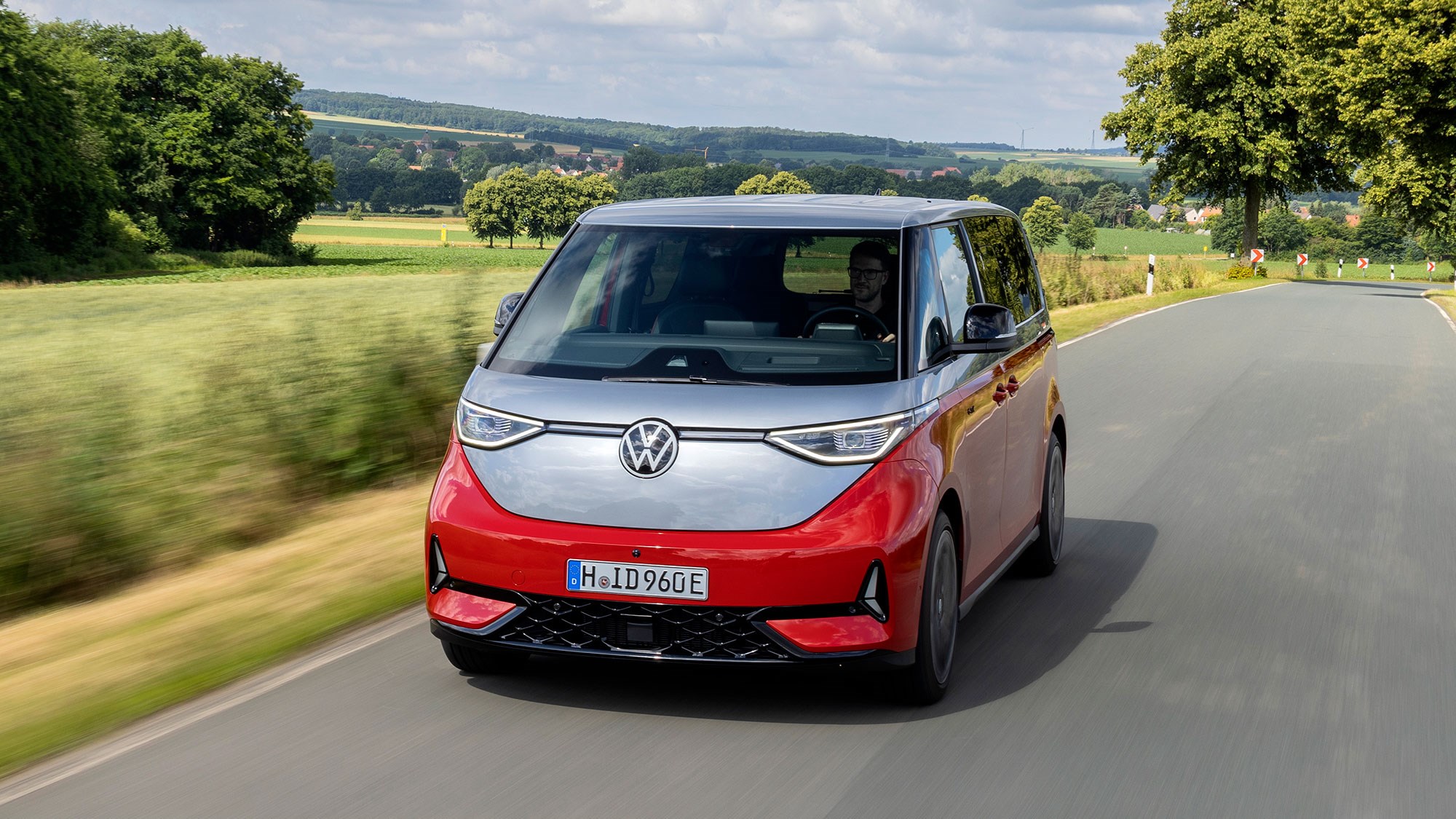
Splash out on the long-wheelbase model and you’ll get a larger 86kWh battery that boosts the Buzz’s maximum range. Volkswagen hasn’t yet confirmed how far either version of the GTX can travel on a single charge but, considering they have a motor on each axle, they won’t be able to match the standard Buzz’s best figure of 291 miles.
Both batteries can also charge from 10–80 percent capacity in 26 minutes at a suitably speedy DC rapid charger.
How does it drive?
It’s quick. Well, -ish. It’s quick in the same way as a Skoda Octavia vRS. There’s loads of torque low down, giving you enough confidence to dart around a dawdling wagon (which is more than can be said for your average van). Much like the standard Buzz, though, performance tails off as you pile on the speed.
I feel like the van’s software is partly to blame for this. Volkswagen capped the MPV’s top speed at 99mph to maximise its range – and you can feel the electronic nanny tightening her grip on your reins at about 80mph. I really don’t see any reason why the GTX couldn’t crack 110mph on the Autobahn, though. It’s certainly stable enough.
Thanks to the battery pack, most of the Buzz’s weight is concentrated low down, between the axles. For a high-sided van, it also cuts through the air cleanly (wind noise was no worse than a large SUV on the motorway) and it’s surprisingly resistant to crosswinds. Our GTX loaner also felt a bit better built than our old long-term Buzz.
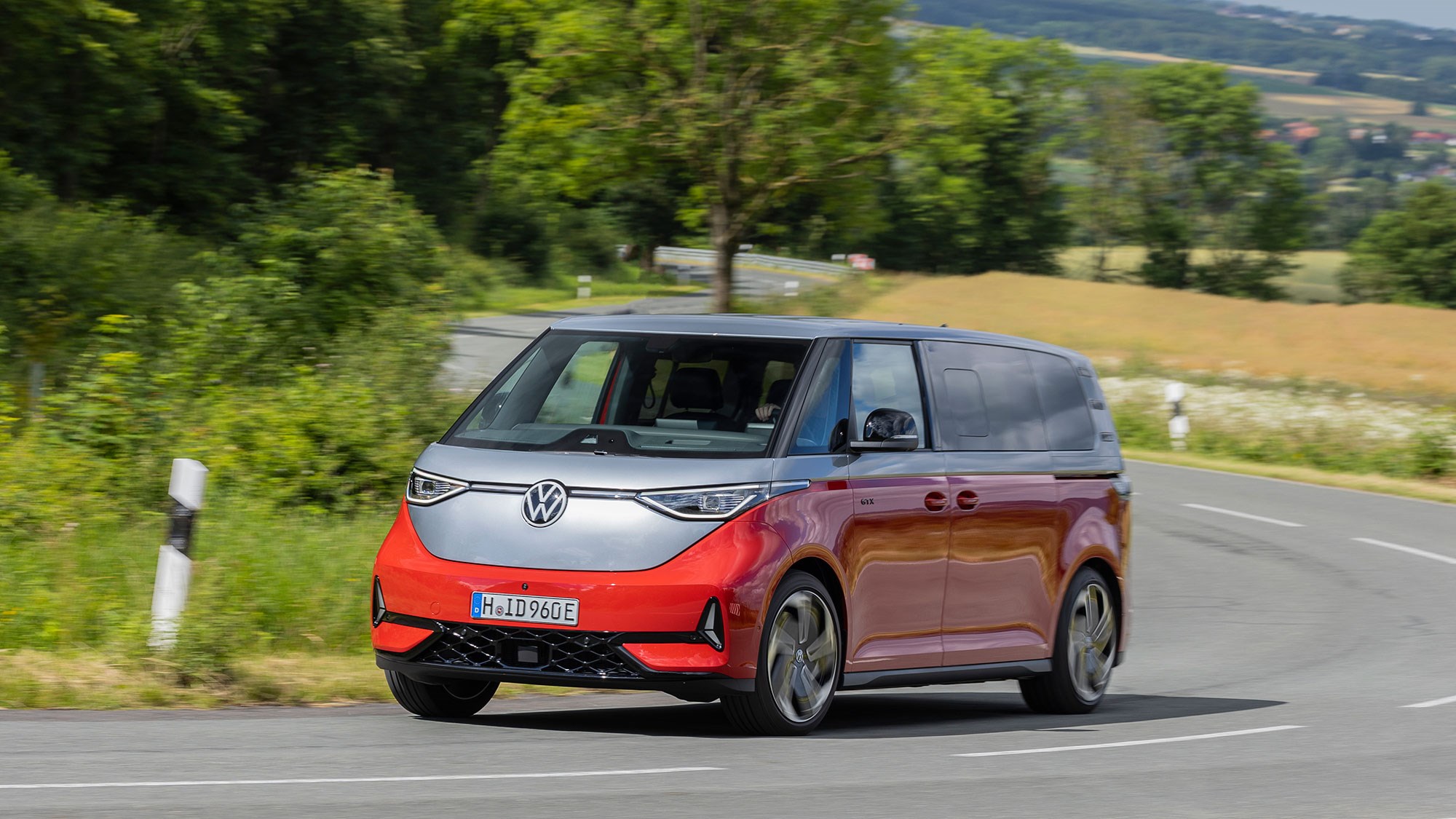
The trims in the luggage compartment no longer rattle around like they’re lashed to the body with cable ties, while the two extra seats at the rear of the cabin absorb a lot of the boominess you get in the standard five-seat model. All of this adds up to a far more pleasant experience on the motorway.
It’s reasonably comfortable, too. The chassis does a decent job of filtering out sharp bumps, although it can get into a strange undulating rhythm on lightly pockmarked surfaces, rocking between the front and rear axles as it tries to control the enormous heft of its battery. This is almost excusable, though.
Where the GTX really starts to falter is when you turn off the motorway and onto country lanes. The same weight that helped to keep the van stable at high speeds somewhat blunts its cornering ability. Enter a bend at what would be a sensible velocity for a normal car, and the weight of battery will shunt the front tyres, making them howl like they’re being tortured by a young hooligan in a fast-food car park.
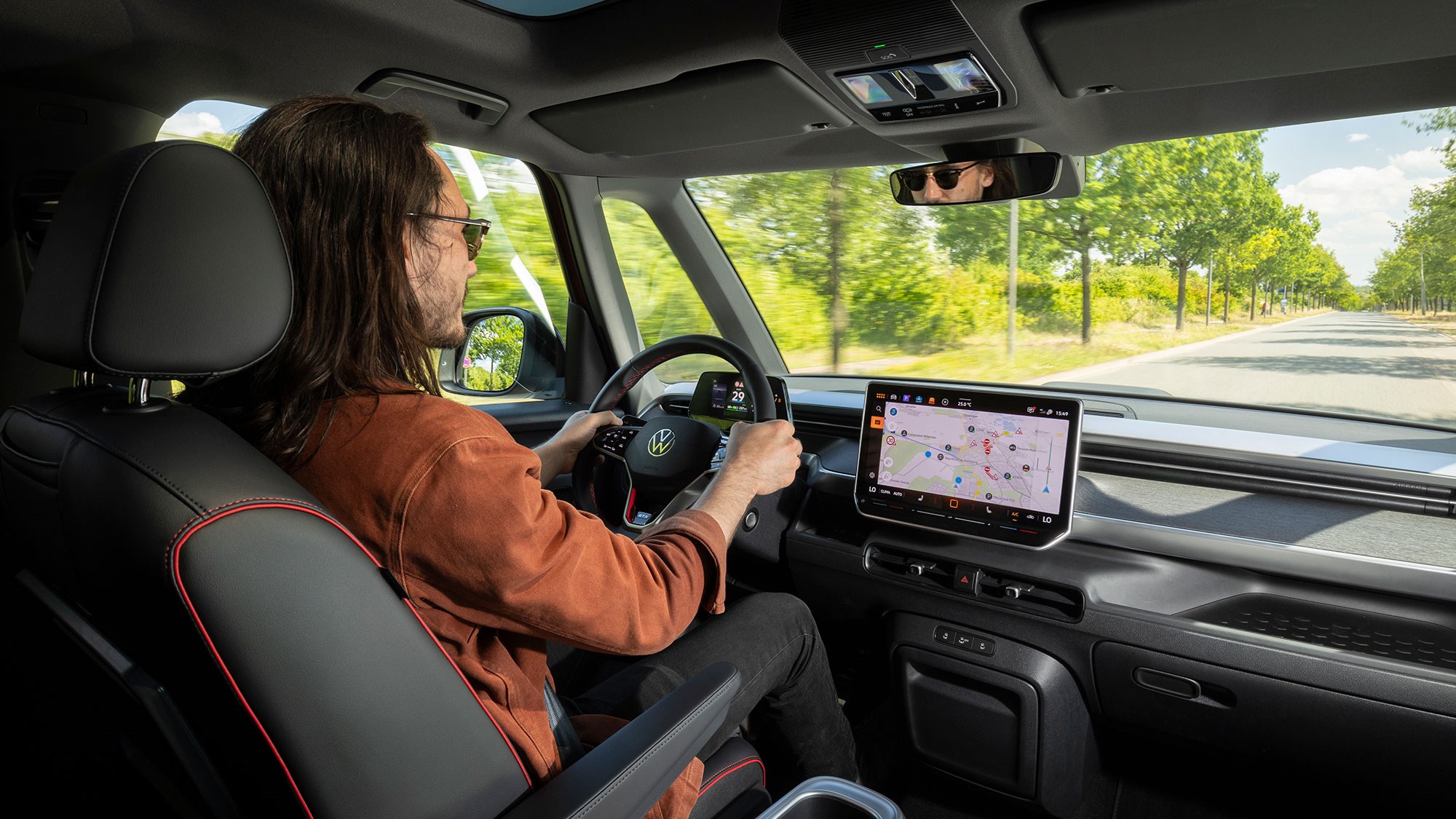
I couldn’t entertain the brakes, either. There’s hardly any feel to them. You might as well be pawing at a pedal on an arcade racer. I found myself constantly second-guessing how much pressure I needed to slow down for a set of lights – and I got it wrong a lot, which meant I often over-braked to stop myself from leaving an imprint of a massive VW emblem in the boot of the car ahead. It’s just as well I wasn’t carrying passengers.
Thankfully, you hardly ever need to use GTX’s proper brakes. Because it has an extra motor on the front axle, Volkswagen has been able to dial up the regenerative braking without fearing about making the van unstable. You can slow the GTX to a halt by simply lifting off the accelerator and letting the front motor act like an anchor.
If Volkswagen tried the same trick with the standard rear-driven Buzz, it’d be like having one of your mischievous mates yank the handbrake on. The braking force would be acting on the unloaded wheels, which is just asking for an oversteer-induced accident. I much prefer the regen system in the GTX.
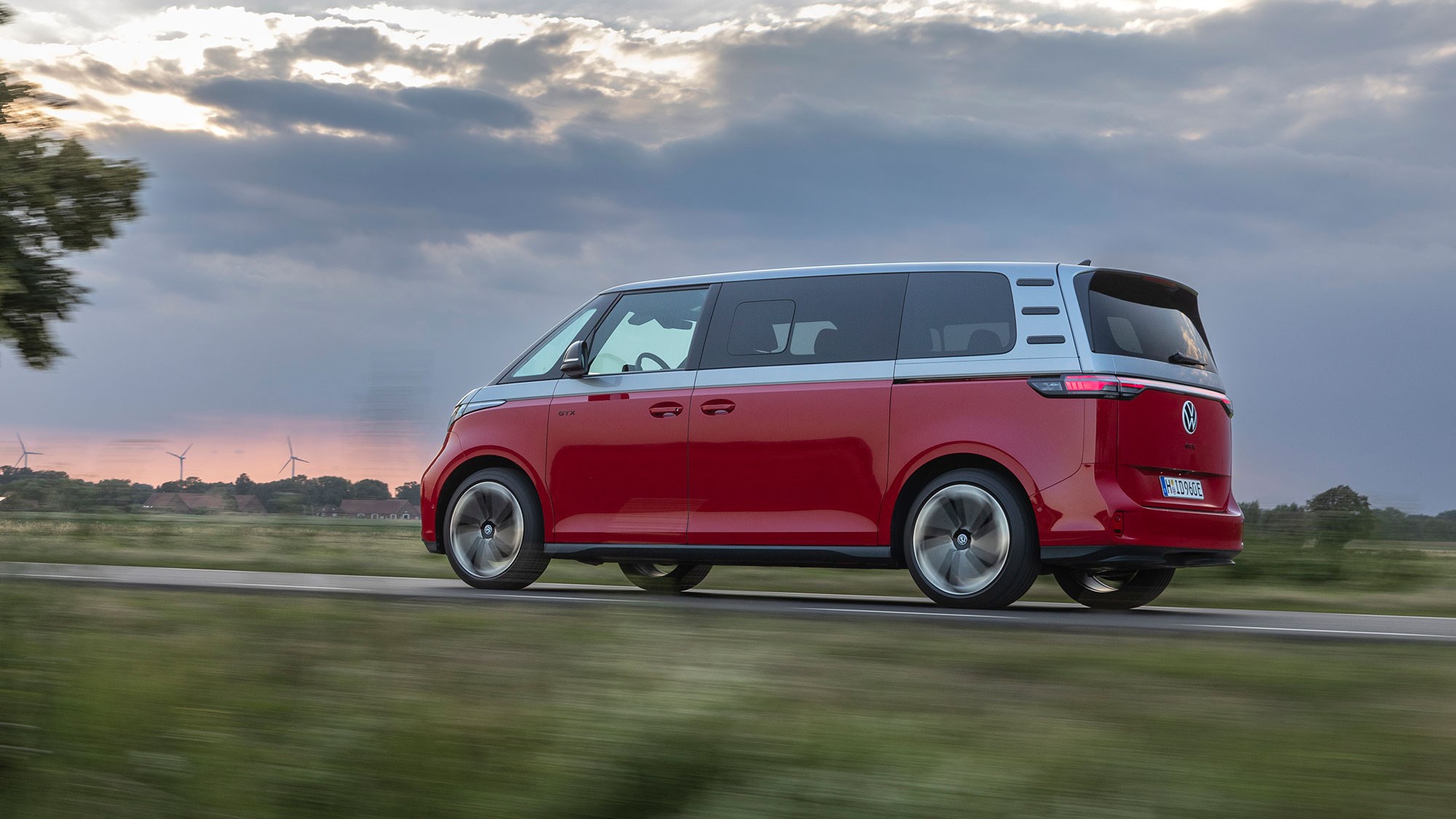
I’ve got one final bit of criticism to dish out for the GTX’s steering system. It’s slow, which is great in a way because it means the Buzz doesn’t feel nervous at motorway speeds. However, it isn’t quite fast enough to tackle a twisty stretch of Tarmac.
I tried the GTX on a particularly challenging switchback road and found I needed an extra quarter to half a turn of lock more than I would have needed in a Transit. So, if you live somewhere rural, you’ll be doing an awful lot of wheel-shuffling. It’s also rather clinical, but that’s a trait shared amongst almost every car on the MEB platform.
What about the interior?
It’s broadly the same as the standard Buzz, just black. You get black sports seats, a black dashboard and a darkened headliner, all of which work to make the GTX’s cabin feel snugger than the standard MPV. Depending on the sort of person you are, this is either excellent or awful. I rather like it.
I also like the GTX’s seats. They’ve got heavier bolsters than the standard Buzz’s and, having tried them back-to-back with those in a non-GTX long-wheelbase model, I found them to be a lot more comfortable. I particularly like the lumbar massaging function, which I can see being a massive boon on a long motorway drive.
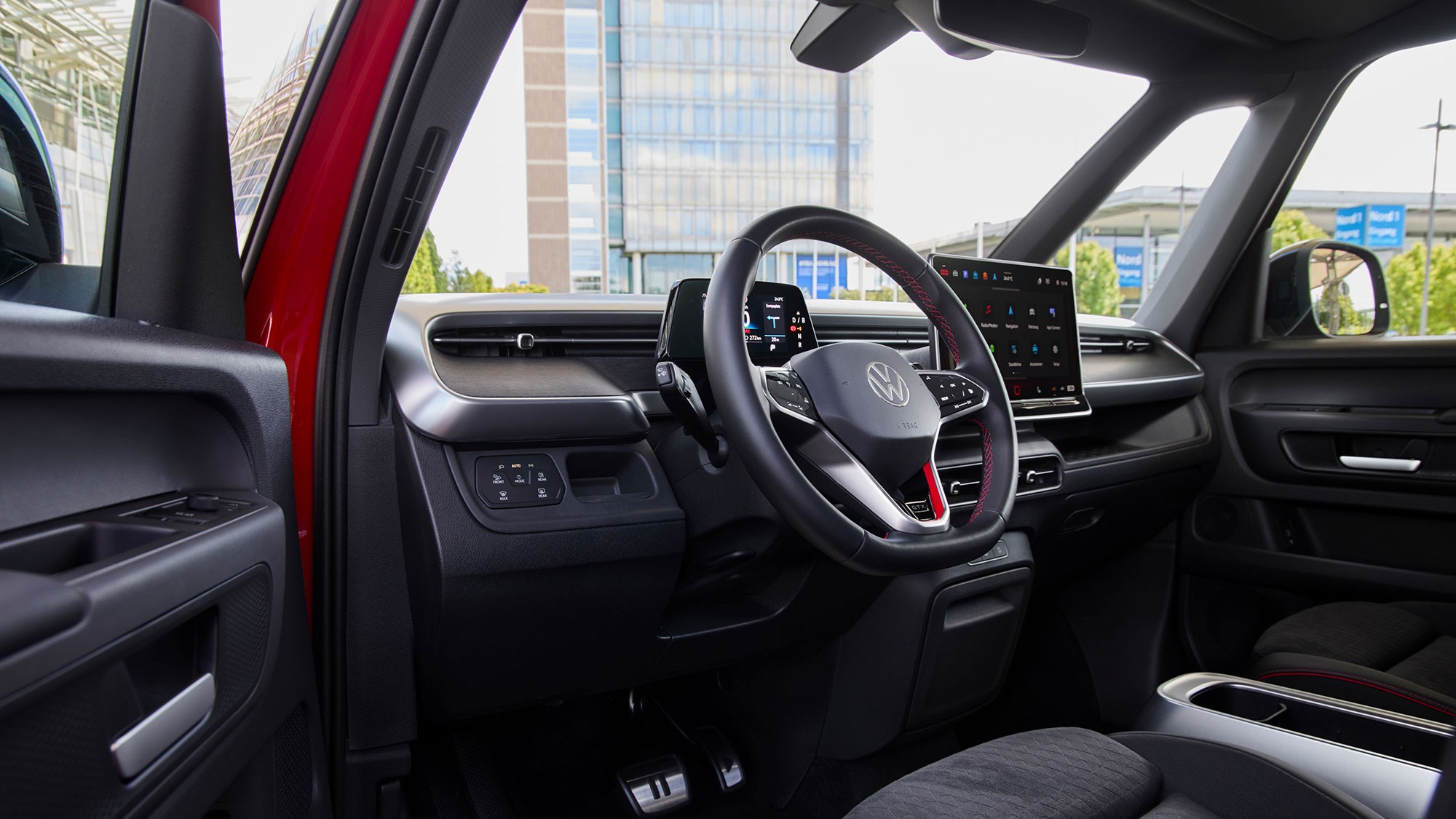
For something that’s supposed to be a practical family bus, though, the Buzz’s boot isn’t particularly spacious. Volkswagen says the short-wheelbase model has a capacity of 1,121 litres – but that’s up to the second row of seats. Opt for a six-seat model (like our test vehicle) and there’s barely enough space on the shelf behind the third row for a rucksack and a pair of carry-on cases.
Before you buy
The Volkswagen ID. Buzz GTX’s biggest problem is the strength of its rivals. If you want a sporty, spacious and eco-friendly family bus, you’d probably be better off waiting for the passenger version of the Ford E-Transit Custom MS-RT.
You’re getting more space and a better driving experience for about the same amount of money – and I really can’t see you missing the extra power offered by the Buzz. It just doesn’t feel as quick as its numbers suggest.
If it was my money, though, I’d probably dodge the sporty MPV niche altogether and buy a Vauxhall Vivaro Life Electric instead. Even in its most generously appointed trim, it’s almost £15,000 cheaper than I’m expecting the ID. Buzz GTX will cost. And if you go for the 75kWh version, Vauxhall says it can cover more than 200 miles on a single charge.
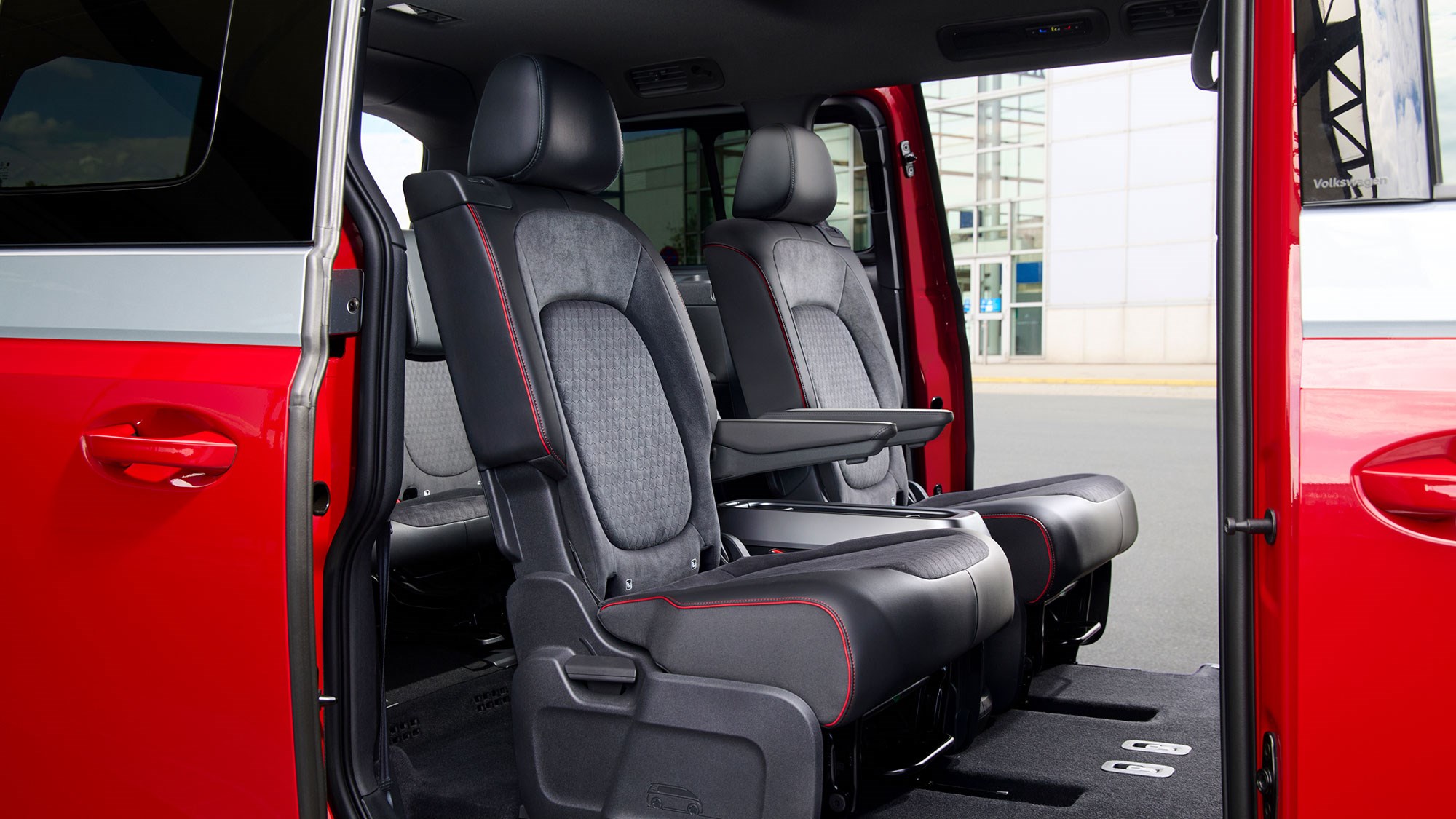
What’s more, in Vauxhall’s Ultimate spec, you can have the Vivaro with six captain’s chairs, glass roof panels and black leather upholstery – which means it’s just as comfortable and very nearly as well-equipped as the Buzz.
Yes, I know you’re sacrificing more than 200bhp by opting for the Vivaro, but I’m struggling to comprehend how that’s such an issue in a vehicle whose primary concern is to carry passengers in comfort – especially when you’re saving enough money to buy an entire town in rural Cumbria in the process.
Verdict
For me, the Volkswagen ID. Buzz GTX is a difficult vehicle to recommend. It’s stumbling around in the darkness between the realms of practicality and sportiness – and the rivals mentioned above feel more coherent because they each tackle one of these traits well rather than trying to wrestle both with mediocrity.
I feel like the ID. Buzz GTX’s biggest problem is one of mis-marketing. I reckon it would have worked far better if Volkswagen had side-stepped the sporty van craze and sold the GTX as a high-torque, softened-off, four-wheel drive, off-road inspired day van designed to let lifestyle-y types indulge in their hobbies without harming the ice caps.
But Volkswagen is remaining committed to its position that this is an electric people that appeals to driving enthusiasts – and I reckon that strategy is writing cheques this MPV’s driving experience can’t cash. Especially in the company of the Transit/Tourneo.
Don’t get me wrong, the ID. Buzz GTX is undeniably a nice vehicle. It’s well-equipped, comfortable, quiet and brisk fast on the motorway. But the conventional Buzz is more than fast enough for me and I don’t feel like the GTX has leaned in to its sporty brief enough to separate it from the standard range.